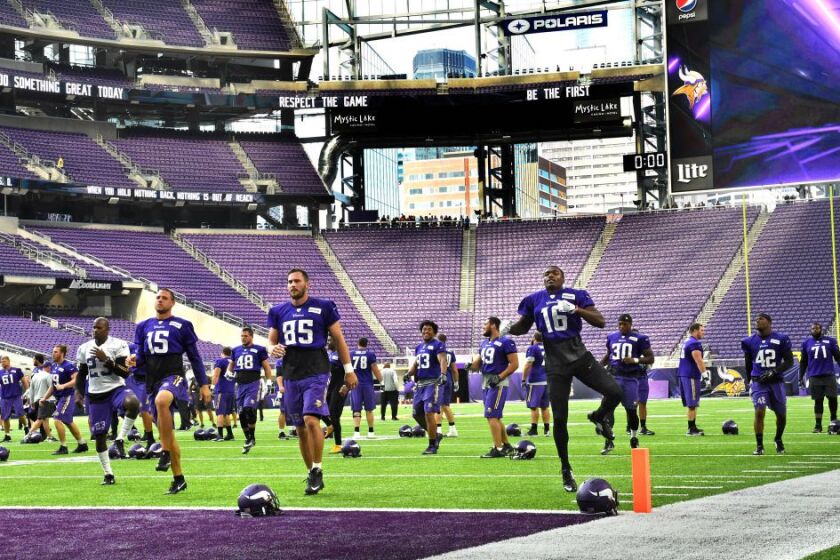
Exhilarating: Vikings to Upgrade with $62M in Sought-after Public Funds
The organization in charge of U.S. Bank Stadium intends to ask Minnesota lawmakers for more than $62 million in security upgrades.
During the previous legislative session, the Legislature and Gov. Tim Walz agreed to spend roughly $16 million to erect car barriers and fencing on the stadium’s north, east, and south sides to dissuade climbers.
Following its meeting on Thursday, Dec. 21, the Minnesota Sports Facilities Authority board stated that it looks forward to “further discussions with the Governor and legislative leaders” to fund the next phase of the project, which includes similar barriers to protect the plazas and main entrance on the stadium’s west side.
The architectural company Populous’ $62.3 million second phase estimate is about a third higher than the $48 million that planners initially predicted over the summer. The proposal is substantially broader than the first phase.
The Legacy Gate entry, the Medtronic and Downtown East plazas, and a two-block section of Chicago Ave are all part of it.
According to the MSFA, the improvements would increase pedestrian safety, ensure compliance with Department of Homeland Security anti-terrorism standards, and complete “the original vision for the stadium.”
According to an agency official, the first round of security upgrades is about 25% complete and on target to be completed by May. The second phase’s timing is contingent on funding.
The MSFA board also chose Act Global to install new artificial grass on the stadium’s playing surface on Thursday.
The $1.3 million contract calls for Xtreme Turf DX, a monofilament surface recommended by the NFL and NFLPA because it is generally thought to be safer for players than previous generations of artificial turf.
It will be the stadium’s third turf restoration since it opened in 2016.
After lawmakers agreed to utilize money from the stadium’s reserve account, state officials reported in June that they had paid off $377 million in bond debt on the $1.1 billion complex, saving taxpayers $226 million in interest payments.
Leave a Reply